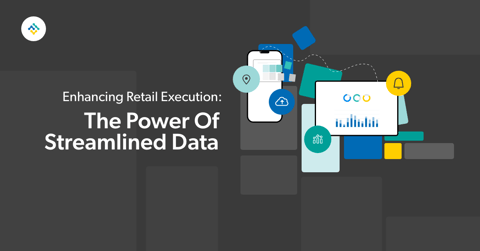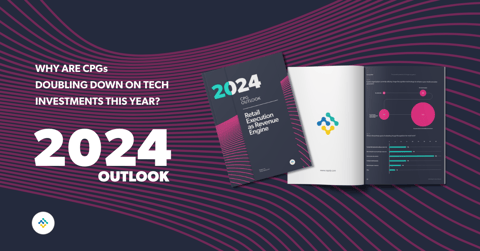Competition is inevitable in any industry, and it’s only getting more fierce. For brands concerned about the impact competitors will have on sales, it’s important to keep a finger on the pulse of the competitive landscape. Conducting a retail competitive analysis allows managers to get a lay of the land while anticipating future threats and areas for improvement.
In This Blog:
What Is a Competitive Analysis? And Why Do It?
What Tools Can I Use to Perform a Competitive Analysis?
Competitive Intelligence Training
Competitive Analysis Steps
How to Do a Competitive Analysis
Identifying Competitors
Product Breakdown
Competitor Pricing
Analysis of Market Share
Competitor Marketing
Customer Sentiment
Other Areas of Consideration
What Is a Competitive Analysis? And Why Do It?
A competitive analysis is the process of collecting and evaluating competitive intelligence in order to reveal insights that can give your brand an advantage over others. Competitive intelligence is defined as information regarding competitor activity, their products, and their customers’ sentiments towards the company.
Some benefits of conducting a competitive analysis are:
- Better strategic planning and benchmarking
- Ability to develop more effective marketing campaigns
- Minimized decision-making risk
- Better preparation for a new product launch or new market entry
- Improved anticipation of threats and opportunities in the marketplace
Generally speaking, there are two types of competitive intelligence: tactical and strategic. The first is concerned with data that can be used to enhance short-term strategies, whereas the latter is focused on insights that can help shape long-term strategy.
Read on to discover what tools and techniques are available for gathering competitive intelligence.
What Tools Can I Use to Perform a Competitive Analysis?
Managers have a number of tools at their disposal for carrying out invaluable competitive research. Use the table below to understand your options more clearly.
.png?width=450&name=Optimized-COMPETITOR%20ANALYSIS%20TOOLS%20(1).png)
*Note about templates: Templates differ from the other tools listed above in the sense that they are used more for recording and analyzing data rather than acquiring intelligence itself. Nevertheless, they are still valuable, as they organize data in a way that’s easily digestible for decision makers. Brands might use a competitive analysis template in conjunction with the other tools listed. Later on, we'll describe the elements included in a template toolkit in detail.
Competitive Intelligence Training
The first step to performing a retail competitive analysis is establishing a process for it. Some data will be sourced online, whereas other data will be collected out in the field. There are likely to be several team members participating in the process, so it’s important to establish some structure.
Competitive Analysis Steps
- Establish objectives of the competitor analysis. Decide how many companies will be included in your competitive audit and how long you will investigate them for. Also consider what aspects of the business you’re most concerned with (i.e. marketing, distribution, revenues, etc.), since it’s difficult to thoroughly evaluate every moving part of a competitor’s operations simultaneously. Also consider what tools you will use as part of your competitive intelligence process during this stage of planning.
- Collect relevant data. Always be mindful of ethical and legal repercussions; “stealing” or tricking employees into divulging sensitive information is never acceptable. There are lots of online systems available for analyzing competitors’ websites, financial health, and more. Additionally, good old-fashioned observation and surveys can be very telling.
- Analyze data collected. Establish a procedure for how data is organized. Will brand representatives or managers be responsible for organizing data? What is the timeline for data analysis after it’s been synthesized? Determine which metrics and qualitative information is actionable, and which need further research.
- Relay findings to decision-makers. To prevent data from going stale, be proactive about deciding how to distribute information to decision-makers. Some strategy changes may involve team members from other departments or stakeholders outside of the organization, so plan for how these key players will be looped in.
How to Do a Competitive Analysis
The specific elements in a retail competitive analysis will vary from brand to brand, but there are certain areas of interest that are relevant for most companies.
Identifying Competitors
Before you can analyze your position in the store, you first have to find out who you're competing against. Besides name, some other useful demographic information to capture is:
- Founding year
- Company size
- Annual revenues
- Headquarters location
- Whether or not the company received funding recently
Product Breakdown
Products are at the heart of the retail environment. Here’s what you need to know about a brand’s competitive position:
- Name and description of product or product line
- Launch date
- Where it is distributed (names and quantities of outlets)
- Names of distribution companies
- In-store location
Competitor Pricing
Being a major deciding factor in the purchasing process, pricing often impacts sales. Notable features of competitors’ pricing are:
- The date range that a given price was active for
- The price of a product or product line across several retail outlets
- Whether or not the price listed is a promotion
Analysis of Market Share
Market share is very revealing of a competitor’s success, so you’ll want to know whether a competing brand is maintaining or increasing its market share in your category. You may also be interested in the market share of substitute products in other categories that can impact your bottom line.
Competitor Marketing
Marketing can be a very complex business function, but to completely ignore the marketing tactics that competitors are using is dangerous. Try to dissect a competing company’s marketing strategy in one or more of the following ways:
- Digital - Probe their social media presence, SEO, domain authority, etc. If your competitors are very active on social media and rank high in search engine results for popular keywords, this could be a red flag for you to put more focus in these areas.
- Field - On the store level, observe any samplings or special sales and doucment them in a competitive promotion report. Also take note of in-store signage competitors are using. It’s not a bad idea to keep track of any special events they’re hosting or attending.
- Traditional - Check to see if competitors are creating brand awareness through traditional platforms like print, TV, and radio. While somewhat outdated, these mediums are not dead.
- Across all channels, note changes in marketing messaging. This could be a sign that the company is trying to reposition itself.
Customer Sentiment
Your company can discoer information about customer satisfaction with competitors through primary and secondary research.
- Primary - When appropriate, interview current or past customers, as well as employees, to get a first-hand account of their experience with a competing brand.
- Secondary - Browse online review sites and social media accounts to “hear” what the public has to say about competitors.
Other Areas of Consideration
The six components discussed above are almost always included as part of a competitive analysis, but there are some other areas of concern for brand managers as well. For example, conducting a retail industry SWOT analysis is a good way to gauge potential opportunities and threats that your brand might face. By doing this type of competitive strength assessment you might find shifts in the marketplace that impact your success.
Another more nontraditional thing to consider is merger/acquisition or co-marketing opportunities you have with your competitors. More often than not, the competition is viewed as the enemy, but data-driven analysis might reveal that working with your competitors can actually add value.
Staying on top of the competition is essential for your brand’s health. Systematically tracking what competitors are doing and how their strategies morph over time is your best defense against being outdone.

![Win More Shelf Space Using a Retail Competitive Analysis [Free Toolkit]](https://391043.fs1.hubspotusercontent-na1.net/hub/391043/hubfs/1._Stock_Photos/Free_Stock_Photos/Optimized-pexels-photo-196656-1.jpeg?width=1200&height=630&name=Optimized-pexels-photo-196656-1.jpeg)
.png?width=450&name=Optimized-COMPETITOR%20ANALYSIS%20TOOLS%20(1).png)


